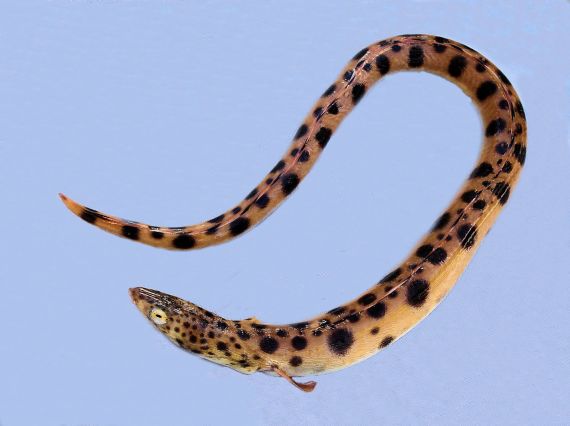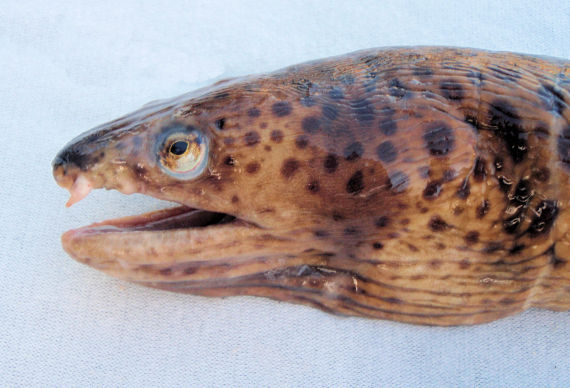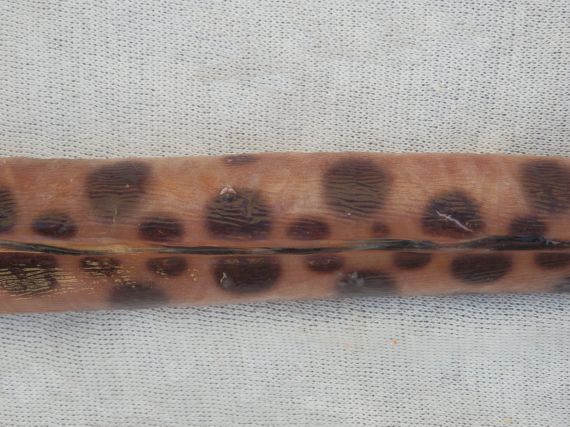Pacific Snake Eel, Ophichthus triserialis



 Pacific Snake Eel, Ophichthus triserialis. Fish caught from coastal waters off Point Palmilla, Baja California Sur, January 2014. Length: 50 cm (20 inches).
Pacific Snake Eel, Ophichthus triserialis. Fish caught from coastal waters off Point Palmilla, Baja California Sur, January 2014. Length: 50 cm (20 inches).
The Pacific Snake Eel, Ophichthus triserialis, is a member of the Snake Eel or Ophichthidae Family, and is known in Mexico as tieso del Pacifico. Globally, there are thirty-six species in the genus Ophichthus, of which nine are found in Mexican waters, three in the Atlantic and six in the Pacific Ocean.
The Pacific Snake Eel has a robust cylindrical body. They have a tan coloration and a rounded cross section with 2 rows of large dark brown spots on their body, 1 along their dorsal fin and the other along their lateral line. Their dorsal fin is yellow with a series of dark oblong spots along its outer half. There are also smaller spots scattered along their belly and on their sides and top of their head. Their anal and pectoral fins are dusky. Their head has an overhanging snout with a large mouth and large eyes located above the middle of the mouth. Their rear nostril is located before the eyes and is covered with a long fleshy flap that extends below the top lip. They have pointed teeth with 2 rows on each jaw and 1 row on the roof of their mouth; they do not have canine teeth. Their dorsal fin originates over the rear of their well-developed pectoral fin. Their blunt tail ends in a hard finless point and is 53 to 58% of total length. They do not have scales.
The Pacific Snake Eel is found within burrows in sandy and muddy bottoms at depths up to 152 m (500 feet). They reach a maximum of 1.13 m (3 feet 8 inches) in length. The Pacific Snake Eel is poorly studied with very limited information available about their lifestyle and behavioral patterns including specific details on age, growth, longevity, movement patterns, diet, habitat use, and reproduction.
The Pacific Snake Eel is a resident of all Mexican waters of the Pacific Ocean.
The Pacific Snake Eel can be confused with the Longfin Spotted Snake Eel, Myrichthys aspetocheiros (throat and dorsal fin without spots), the Mustachioed Snake Eel, Herpetoichthys fossatus (tail less than one-half total length; minute pectoral fins), and the Tiger Snake Eel, Myrichthys tigrinus (pale dorsal fin margin; broad pectoral fin base; spots of uniform size).
From a conservation perspective the Pacific Snake Eel is currently considered to be of Least Concern with stable, widely distributed populations. Although fairly abundant and of good size, are of limited interest to most and normally a “catch and release.”